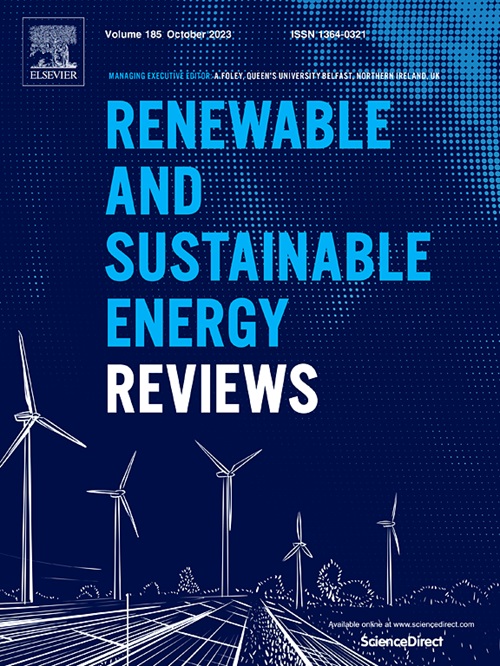Quantifying dynamic solar gains in buildings: Measurement, simulation and data-driven modelling
IF 16.3
1区 工程技术
Q1 ENERGY & FUELS
引用次数: 0
Abstract
Solar energy is an essential renewable energy source for buildings, such as electricity generated by building-integrated photovoltaic and both electricity and thermal energy offered by building-integrated photovoltaic-thermal systems. Additionally, the fraction of solar energy that penetrates the building envelope is known as solar gain, which considerably impacts the internal thermal dynamics in most buildings. Therefore, controlling solar gain plays a key role in passive solar design strategies or minimizing heating/cooling loads for buildings, since solar gains are generally preferred during the heating period (e.g., winter) but undesirable for summer. Gauging the dynamics of solar gains in buildings is vital for characterizing indoor thermal dynamics and optimizing solar gain control. However, there is a lack of summaries in the literature on the available approaches to quantifying solar gain dynamics in buildings. Hence, this paper summarizes and reviews three approaches available in the literature for gauging solar gain dynamics: measurement, simulation, and on-site data-driven modelling. Furthermore, the pros and cons of these approaches are summarized and discussed. Additionally, recent studies highlight that integrating basis splines (B-splines) into data-driven modelling of dynamic solar gains has proven to be a promising solution for significantly enhancing the accuracy of solar gain dynamics using limited on-site data.

求助全文
约1分钟内获得全文
求助全文
来源期刊

Renewable and Sustainable Energy Reviews
工程技术-能源与燃料
CiteScore
31.20
自引率
5.70%
发文量
1055
审稿时长
62 days
期刊介绍:
The mission of Renewable and Sustainable Energy Reviews is to disseminate the most compelling and pertinent critical insights in renewable and sustainable energy, fostering collaboration among the research community, private sector, and policy and decision makers. The journal aims to exchange challenges, solutions, innovative concepts, and technologies, contributing to sustainable development, the transition to a low-carbon future, and the attainment of emissions targets outlined by the United Nations Framework Convention on Climate Change.
Renewable and Sustainable Energy Reviews publishes a diverse range of content, including review papers, original research, case studies, and analyses of new technologies, all featuring a substantial review component such as critique, comparison, or analysis. Introducing a distinctive paper type, Expert Insights, the journal presents commissioned mini-reviews authored by field leaders, addressing topics of significant interest. Case studies undergo consideration only if they showcase the work's applicability to other regions or contribute valuable insights to the broader field of renewable and sustainable energy. Notably, a bibliographic or literature review lacking critical analysis is deemed unsuitable for publication.
 求助内容:
求助内容: 应助结果提醒方式:
应助结果提醒方式:


